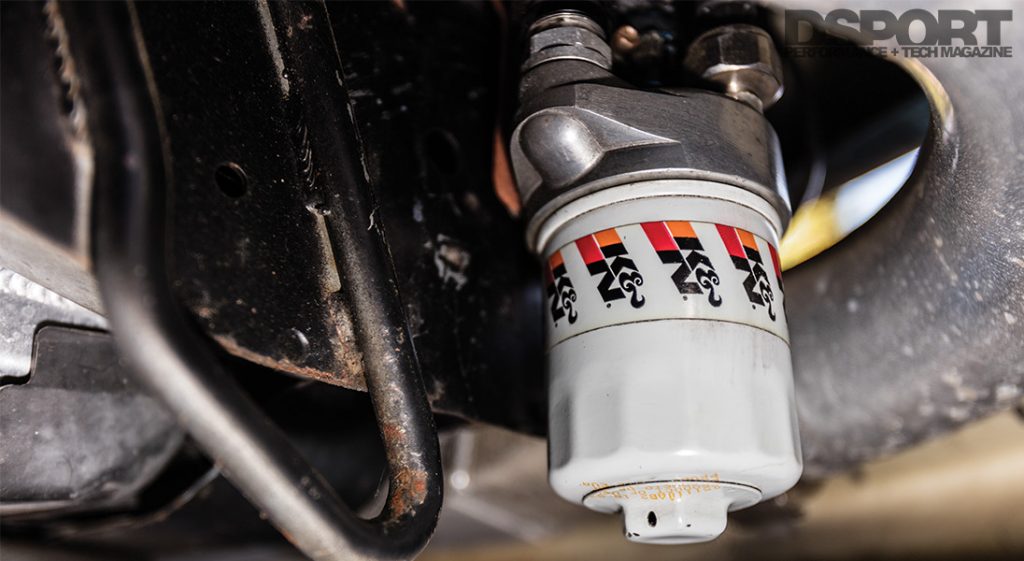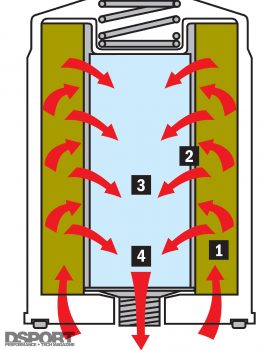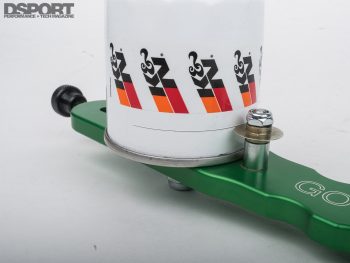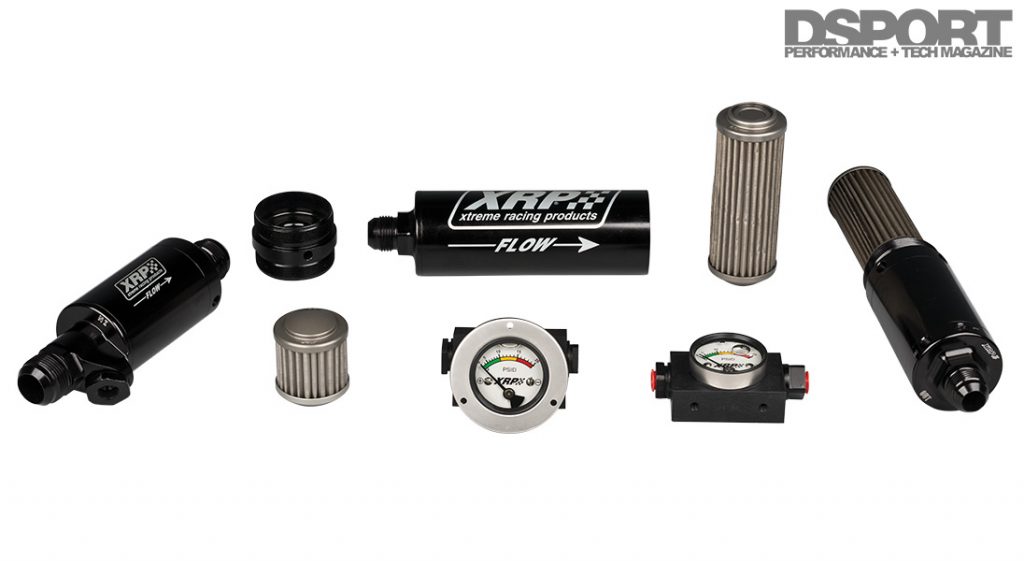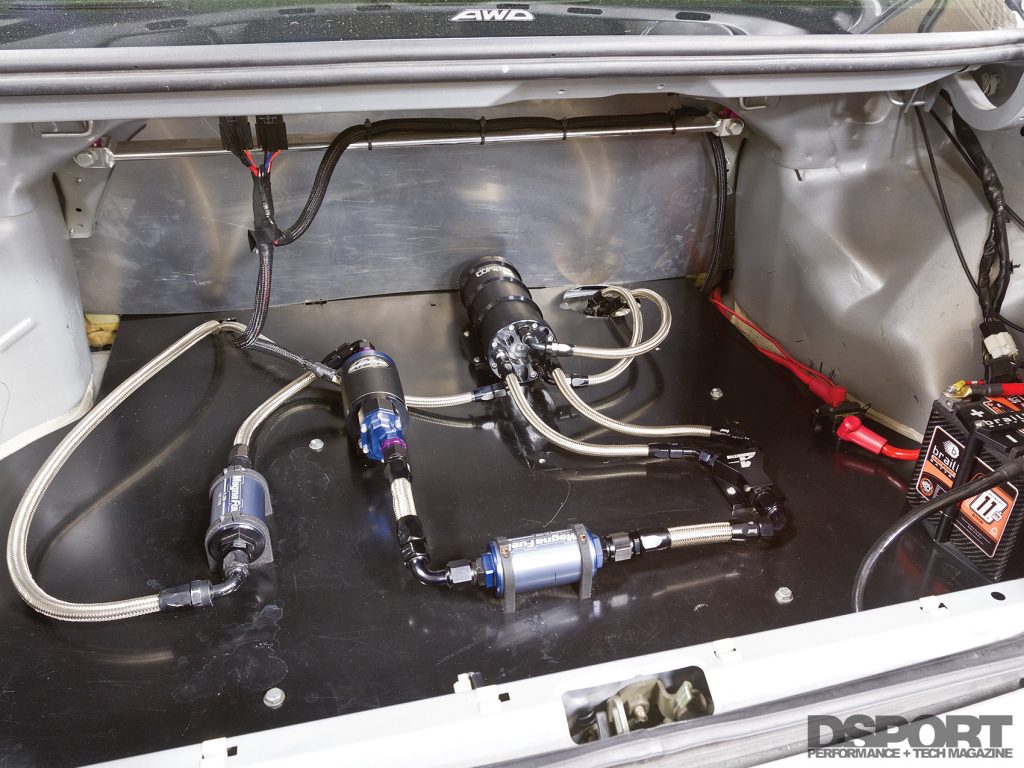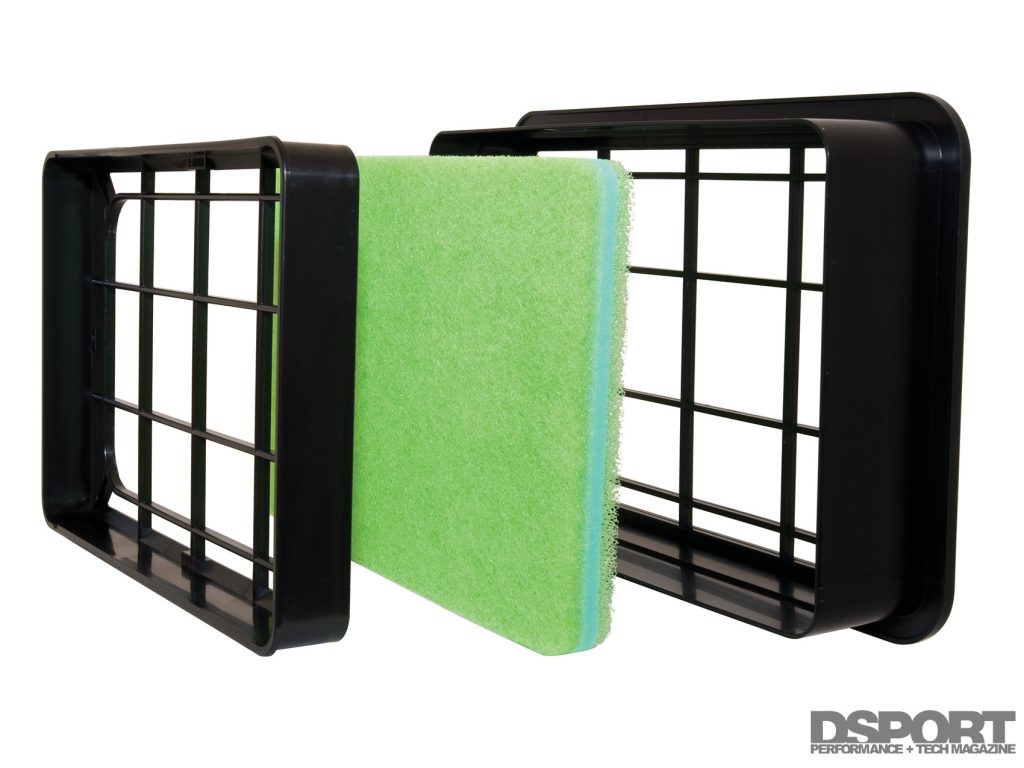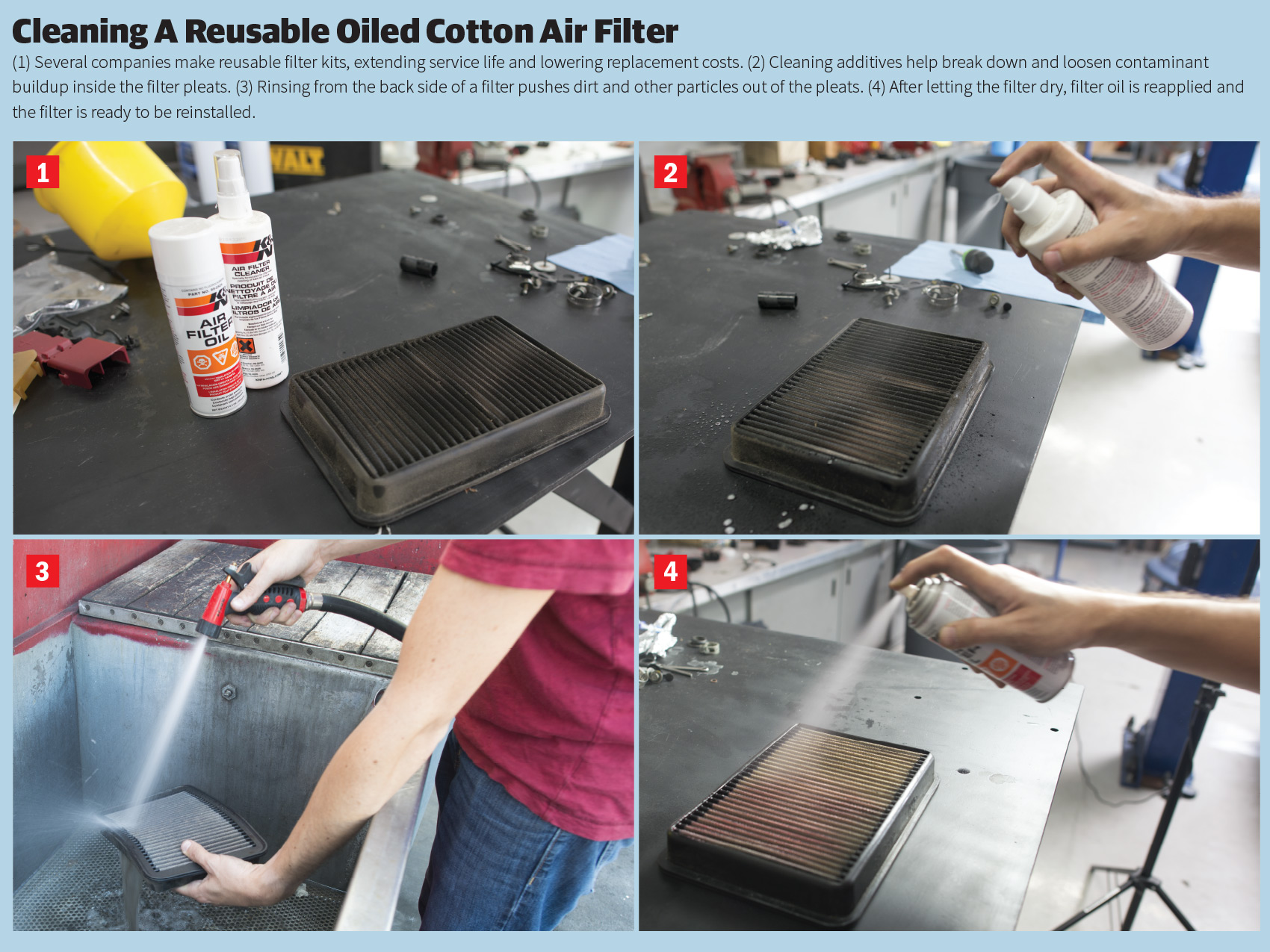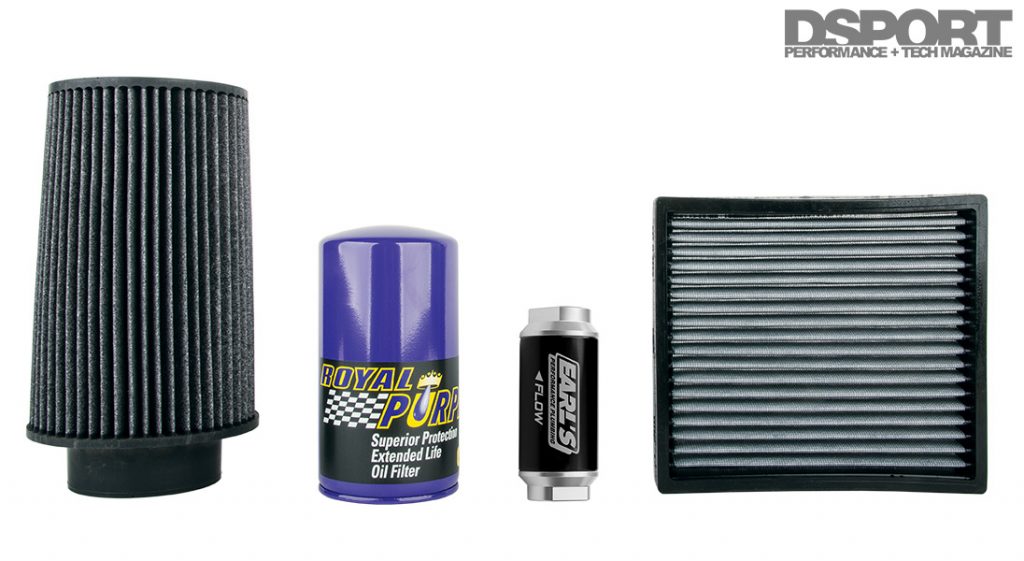Impurities are constantly trying to find their way into your engine, undermining reliability and causing harm. Filters are the primary line of defense protecting a car from harmful contaminants. Modern vehicles utilize an array of filters, each separating foreign objects from entering vulnerable areas of the powertrain. Filters eventually reach limits of effectiveness, and need to be cleaned or replaced. Often scheduled alongside other frequent maintenance items, filter replacements are an essential part of caring for your car.
Text and Photos by Stanley Yee
DSPORT Issue #172
Oil Filters
As engine oil circulates through an engine and collects contaminants, it falls on the oil filter to trap and contain them while passing clean oil back into the system. Engines subject oil systems to a host of harmful materials. Metal filings from the rotating assembly, deteriorating gaskets and carbon blow-by can all foul an oil filter, compromising its effectiveness.
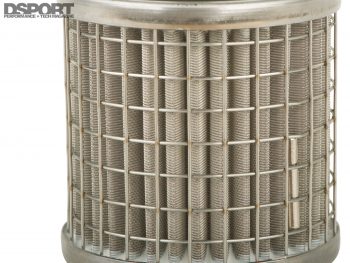 The oil filter medium lives inside a filter’s metal housing. Most filter mediums use sheets of cellulose fibers with additional matrixes of synthetic glass and polyester fibers to trap foreign particles from circulating back to the engine. Paper filter media are pleated to maximize surface area in its circular housing, with the number of pleats determined by the thickness of the filter medium and the desired flow rate. The Society of Automotive Engineers (SAE) rates filters by their ability to collect micron-sized particulates through a single pass of the filter. Successful filters will remove about 98-percent of contaminants between 5 to 20 microns in size on the first pass.
The oil filter medium lives inside a filter’s metal housing. Most filter mediums use sheets of cellulose fibers with additional matrixes of synthetic glass and polyester fibers to trap foreign particles from circulating back to the engine. Paper filter media are pleated to maximize surface area in its circular housing, with the number of pleats determined by the thickness of the filter medium and the desired flow rate. The Society of Automotive Engineers (SAE) rates filters by their ability to collect micron-sized particulates through a single pass of the filter. Successful filters will remove about 98-percent of contaminants between 5 to 20 microns in size on the first pass.
1. Oil enters the filter, carrying with it small contaminants from the engine.
2. Contaminated oil passes through the pleats. The pleats collect and hold most of the particles.
3. Debris-free oil travels back down through the center of the filter.
4. Filtered oil gets sent back into the oil system, cleared of nearly all contaminants.
Over the course of its use, an oil filter loses its effectiveness and eventually warrants replacement. At that time, a filter can be swapped with an OEM filter, an aftermarket equivalent or in some cases, a larger capacity unit. A common tactic to increase oil filter capacity is to install a filter with the same mounting threads as the OEM unit but with a longer filter body. Assuming proper fitment, these upsized filters can more effectively collect contaminants due to an increase in filter media surface area. Filters are designed around similar service intervals as oil changes, which minimizes the risk of cross contamination and promotes efficient oil movement through the filter medium.
Analyzing Oil Filters
Several companies make tools that can be used to inspect oil filters. These tools cut through the metal body of the filter media creating minimal amounts of metal shavings (which can invalidate the analysis), exposing the filter for closer inspection. Further disassembly of the filter can reveal issues within the engine, indicated by debris found in the filter pleats.
Fuel Filters
Dirty fuel can wreak havoc on fuel pumps and injectors, which in turn can put engines at risk of fuel starvation and lean conditions. It falls on the fuel filter to remove any particulate in the fuel, passing it through the pump and injectors at a high rate of flow.
One shortcoming of modern cars is the proliferation of the pickup sock over the traditional in-line fuel filter. The pickup sock acts as a single line of defense in fuel filtration, lacking the small particle filtration of an in-line filter. Even in a car with a factory in-line filter, it isn’t quite as simple as installing the finest filter available, as it would likely get clogged after a short amount of time. Making matters worse, modern fuel injectors have tight tolerances that can easily suffer from clogs when using improperly filtered fuel.
Contaminants can originate from the production of fuel or from an incidental source like transporting the fuel in a jug. Ideally the fuel filter would collect all of the contaminants without impeding flow, which would require frequent replacement of the filter or risk clogging the whole system. One solution is to employ a multi-stage filtration system. Multi-stage systems use consecutively finer filters to minimize fuel system pressure loss while maintaining high flow rates, potentially extending filter replacement intervals.
Air Filters
As we saw in Issue 171’s Bolt-On Basics, air intakes can lead to quick and easy power gains. As with any filter, air filters still require some maintenance over time. Air intake filters block dirt and debris from entering the engine, sending only clean air into the intake tract. Unlike liquids, which have a tendency to carry particulates, air will only suspend small particles, which is less taxing on the filter and can lead to longer service life. Many aftermarket air filters are designed to be reusable, and with routine cleaning can be used for an extended period of time.
Filters come in different shapes and sizes including cylindrical, conical and rectangular filters.
In addition to time and mileage, driving conditions also influence air filter replacement. Driving on unpaved roads, for example, will introduce far more dust than city driving. When a filter gets overloaded it impedes airflow to the engine, causing a drop in power. To ensure that your car has a clean filter, modern vehicles rely on an array of electronic sensors for monitoring engine vitals, but the best way to gauge the condition of an air filter is to visually inspect it for contaminants. Most filters are accessible by simply removing the top of the factory airbox. This can also be the perfect time to upgrade to a high-flow intake system or performance panel filter.
While air filters keep your engine from ingesting dirt and debris, a vehicle’s cabin filter acts as an air purifier for the occupants. Using the same principles as other air filters, cabin filters remove small irritants like dust and pollen from a car’s heating and air conditioning system. This allows only clean air to circulate through the vehicle cabin. Typically located under the dashboard, cabin air filters should be cleaned or replaced if there are any odors lingering in a car’s ventilation system. OEM replacement cabin filters are inexpensive and are easy to change.
Reasons for Replacement
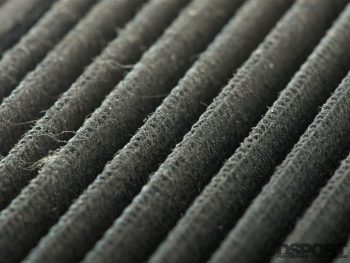 Filters are inexpensive but hold high responsibility, protecting cars from the dangers of contamination. With basic attention to service intervals, changing filters can make the difference in keeping a car running well over a long period of time or blowing up in a short period of time. Regular maintenance can even present an ideal opportunity to justify upgrading one or more aspects of a car’s filtration system, promoting reliability, increasing longevity and even boosting power.
Filters are inexpensive but hold high responsibility, protecting cars from the dangers of contamination. With basic attention to service intervals, changing filters can make the difference in keeping a car running well over a long period of time or blowing up in a short period of time. Regular maintenance can even present an ideal opportunity to justify upgrading one or more aspects of a car’s filtration system, promoting reliability, increasing longevity and even boosting power.
Manufacturers lay out detailed service logs for their vehicles, but they’re usually buried in the back of owner’s manuals which never leave the glovebox. For most cars the process is already streamlined from the factory; check or replace filters at their intended mileage or time frame, then wait until the next scheduled event. It may seem daunting to have to check or replace filters every few thousand miles, but their replacements could make all the difference in a car’s performance and drivability. As much of an annoyance as it may be to pay for new filters, it’s far better than having to fix issues caused by neglected filters. By following the scheduled maintenance over the specified mileage or time frame, cars run better, longer and more reliably.
Filter Intervals
Replacement intervals vary from manufacturer to manufacturer, even car to car. Factory service manuals will list exact mileage checkpoints or time frames for filter replacement. Manufactuers will also usually list shortened intervals for vehicles operating under harsh conditions.
Air Filter 15-30k Miles
Oil Filter 3-10k Miles
Fuel Filter 50-100k Miles
Cabin Air Filter 15-30k Miles



